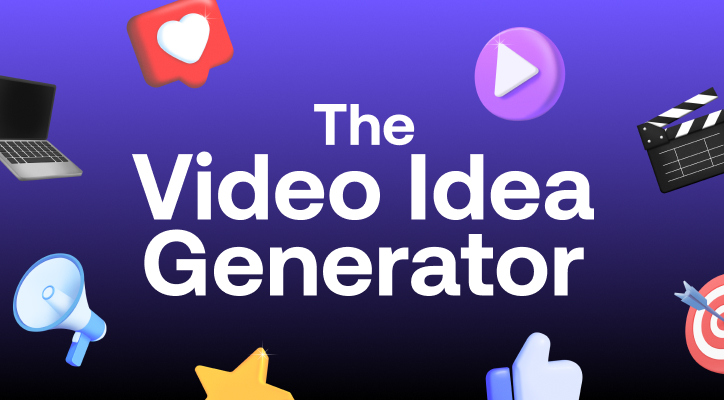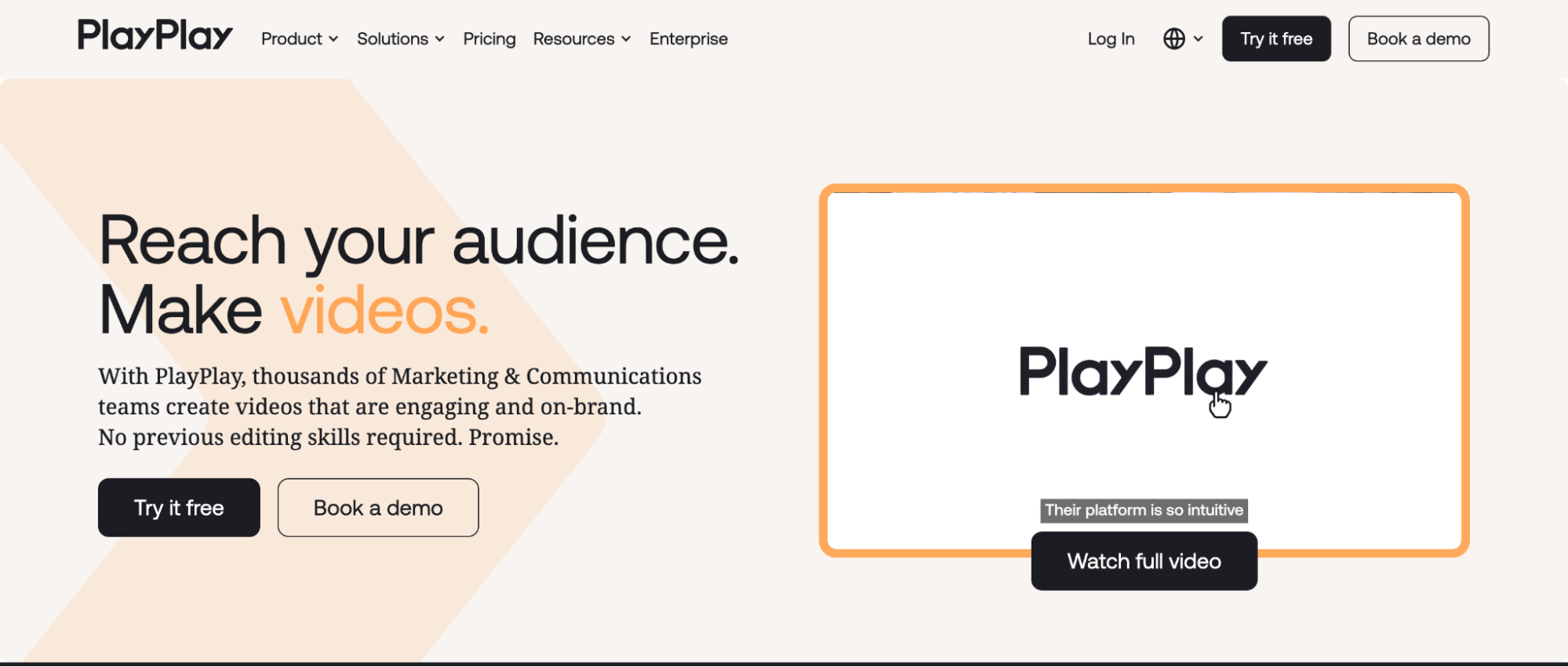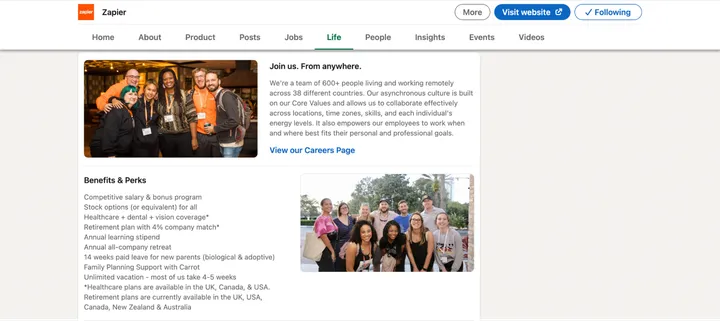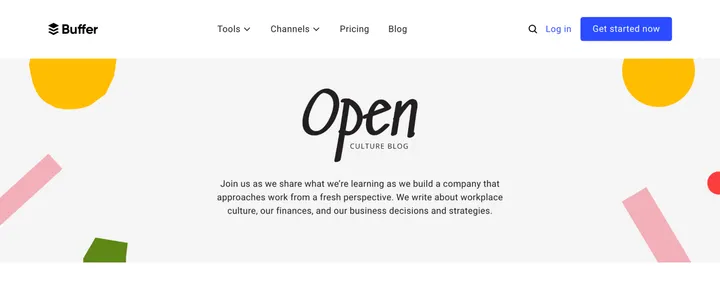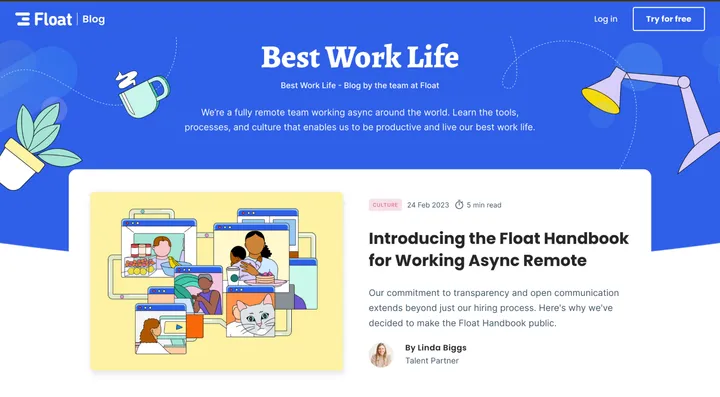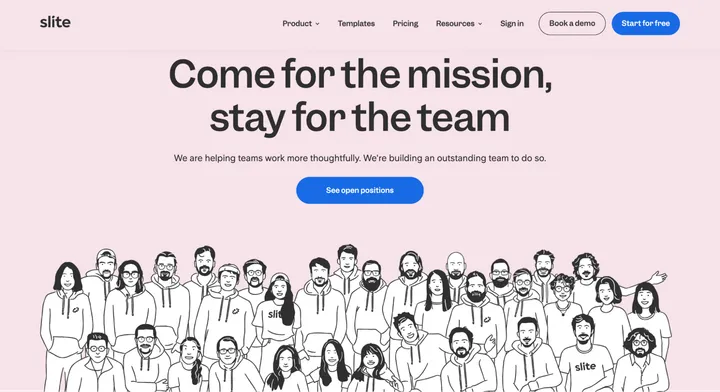To win the talent war, you must approach the recruiting process like a marketing one. Put your brand in front of the target audience, focus on audience engagement, and deliver value.
An effective employer branding process helps you achieve the above-mentioned goals. In fact, data from our employer branding guide shows that 75% of those looking for new career opportunities will apply strictly to companies that have a solid reputation.
But how do you build a strong employer brand? In this article, we will walk you through the exact strategies for taking your brand reputation from zero to a hundred.
Build a Strong Brand Identity and Become an Employer of Choice
Get the latest guide to discover how to build an employer brand that attracts & retains the talent you need to drive your business forward.
Get the guide What is employer branding?
Employer branding is the process of positioning your company as the best place to work — so you can attract top talent and ensure that current employees feel proud and motivated to work for you.
Employer branding goes beyond being active on social media, hosting pizza parties, and offering free ice cream — Dang! There goes the plan for free ice cream at work.
Instead, companies with strong employer brands prioritize:
- Creating a positive workplace where everyone feels valued and respected
- Leading difficult industry conversations about diversity, inclusion, and equality
- Compensating employees fairly for their talent
These things matter because perceptions of your company actually shape your employer brand. You could spend all of your time discussing how your organization is a great workplace, but it will amount to nothing if many of your former employees shared negative reviews on Glassdoor or LinkedIn, for example.
People are more likely to trust what others say about your brand instead of what you have to say about it. So, if you want a great employer brand, invest in delivering the best experiences for those within and outside of your organization.
Why is employer branding important?
Here are 3 reasons why employer branding is important for your business:
1. Cut down recruitment costs
Employer branding reduces your average cost-per-hire by up to 50%. It helps you generate organic visibility for job openings instead of relying on external recruitment methods like job boards and third-party talent sources.
A strong employer brand means your company already has industry traction — like a large social media following and lots of email subscribers. When you post an open role, these people see and share it with their network. You could get your ad in front of thousands of A+ candidates without spending a dime.
The money saved by employer branding in recruitment costs can help scale your employee branding efforts to generate more ROI in the future.
2. Shorten hiring time
Investing in employer branding can cut your hiring time in half. A strong employer brand gives candidates a positive feel of your company's culture and values.
About 75% of job seekers will only apply for a role with a company that actively maintains its employer brand because they are already familiar with the company's culture and values. These candidates also submit better-quality applications because they understand what you're looking for — meaning you're not wasting time reviewing irrelevant applications.
The faster you hire candidates, the more money your business saves (in recruitment costs) and makes (in ROI on the new hire).
3. Increase employee retention
Investing in employer branding can reduce your employee turnover rate by up to 28%.
A solid employer brand builds a work environment where employees thrive. The pay is excellent, there are many career advancement opportunities, and everyone is treated with respect. All these things lead to a lower turnover rate as employees are less inclined to leave a job they enjoy.
High employee retention rates save money and improve efficiency because you're not wasting time waiting for new employees to familiarize themselves with your work processes. A new hire takes up to twelve months to ramp up to full productivity.
7 steps for creating an employer branding strategy
You either leave your employer brand to chance or take deliberate steps to build a solid reputation for your business. For the latter, you need an employer branding strategy.
An employer branding strategy is a high-level plan for developing an appealing brand image that attracts, supports, and retains top talent.
Here are 7 simple steps for creating an effective employer branding strategy:
Step 1: Conduct an employer brand audit
Audit your employer brand to get a sense of what people already think about your organization. You’ll discover what’s working for your brand and where you need to improve.
“But my company has never invested in employer branding. Where do we find the right data?” Good question! You can:
- Run anonymous employee surveys to get first-hand feedback about what it’s like working at your company
- Analyze reviews on third-party sites like Blind and Glassdoor
- Use social listening tools like Hootsuite and Sprout Social to track brand mentions on social media
- Ask candidates for feedback on your hiring and onboarding processes
Armed with these insights, you can set a clear direction for your employer branding strategy and do it well!
Step 2: Write your employer value proposition
An employer value proposition (EVP) tells potential employees why they should work for you. It highlights the tangible and intangible benefits of joining your company — like work culture, perks, and career opportunities.
Your employer value proposition is the foundation of all employer branding activities. It informs all your brand stories, projects, and initiatives and helps you deliver meaningful and authentic experiences for your audience — especially for your future candidates and your existing employees!
Approach your EVP like an elevator pitch for your organization — only this time, you're pitching prospective employees, not investors. Be concise. No one wants to read a ten-page document explaining why they should work for you.
Take a cue from PlayPlay’s recruitment page:
The EVP explains the problem PlayPlay solves for businesses, so candidates understand the goals of the organization and get a sense of how they can contribute to it. It also uses words like “high growth” and “international” to highlight an abundance of career advancement opportunities.
Another noteworthy element here is the use of video. In addition to highlighting the quality of PlayPlay’s video creation tool, this simple, human-first video captures PlayPlay's culture. Seeing real people talk about the company’s mission and the impact of their work gives applicants a better idea of the kind of career opportunities they have and how they can succeed in their job application and role.
Step 3: Set clear goals
Set clear goals to guide the execution of your strategy. Employer branding is complex, and things can easily go out of scope. When this happens, the goals will help everyone realign with the original plan.
Your goals should be SMART: Specific, Measurable, Achievable, Relevant, and Time-bound. For example, don't say, “We want to grow our social media presence.” Say, “We want to grow our LinkedIn followers by X% in Y months.”
Once you've defined your employer branding goals, it becomes easier to measure the effectiveness of your strategy and make adjustments as needed.
Step 4: Choose your channels
Channels are where your brand interacts with your target audience. You have many options here:
- Social media platforms like Twitter, TikTok, and LinkedIn
- External employer review sites like Indeed, Blind, and Glassdoor
- Internal newsletters
- The announcement channel in your company Slack or intranet
- Niche communities and networking groups
Audience-wise, you want to choose a channel your ideal candidate already engages with. For example, LinkedIn is a great place to reach C-level executives, while TikTok primarily helps you connect with Gen Z-ers.
Step 5: Choose your formats
Content formats are how you pass your employer branding message to your target audience. They generally fall into four categories: Images, texts, audio, and videos.
There are 3 main factors to consider when choosing the right format:
- Channel: Certain channels only support specific formats. For example, Instagram and YouTube are built for videos.
- Internal bandwidth: Some formats demand more time, money, and expertise than others. For example, it is “cheaper” to whip up a LinkedIn post than to produce a podcast.
- Audience: To increase your reach and engagement, produce content in the format your audience is already familiar with. If your audience comprises visual learners who like audio, you should produce videos. And if they like to read, publish blog posts and newsletters. Run polls and surveys to discover the formats your audience prefers.
The most effective employer brand strategies will use a mix of formats to convey their message – but research shows that video is the most powerful medium online.
In 2022, social media posts that contained videos earned 1.5 times more engagement on average than any other posts. And job postings with embedded videos get 800% more engagement than traditional “text-only” ads.
You don't need advanced video editing skills to make engaging videos. With a tool like PlayPlay, you can produce easily-digestible employer branding videos in as little as 15 minutes.
Step 6: Get employee buy-in
Any public is more likely to trust employees' first-hand experiences over your carefully curated branded content.
On average, employees have ten times as many connections as their company has followers on LinkedIn. On top of that, posts get 800% more engagement when they are shared on the employee’s personal social media account compared to official brand pages.
The most effective way to engage your employees in employer branding is by building an employee advocacy program — a step-by-step plan for turning your employees into brand advocates. You can do this by educating your employees, providing them with the right tools, and integrating advocacy into your day-to-day operations.
Not all your employees will be open to sharing on social media, and that's fine too. Don’t force them. Instead, focus on creating systems that make it easy for anyone to advocate for your brand online.
Step 7: Track performance
Track key performance metrics to know how well you've met your employer branding goals and identify areas that require improvement. After all, you can't improve what you don't measure.
You can measure the impact of your employer branding activities through tools like Google Analytics, reviewing in-app analytics on your social accounts, or running surveys and polls with current and prospective team members.
5 employer branding examples
Enough with the paper descriptions; let's see what great employer branding looks like in practice. We scoured the internet for employer branding examples of companies that do it right to inspire you!
1. PlayPlay
At PlayPlay we know first-hand the impact of using the video-first approach to employer branding. Employer branding videos help businesses like us communicate their mission, culture, and values in a human and more authentic way.
For example, instead of writing bland quarterly updates, we share bite-sized interactive brand content like the video below. It’s a more exciting way to capture all we’ve been up to and show the humans behind the brand.
We’re also big on employee advocacy. Our team members regularly share their experience at PlayPlay, and what working at the company feels like. These posts highlight some of our employees’ experience with our remote policies, their favorite aspects of it, and how we empower them to do their best job no matter where they are.

Need a video creation platform for your videos?
Do you need to create employer branding videos? With PlayPlay video creation platform, you can produce professional videos for various platforms like LinkedIn and TikTok, helping you engage your audience and boost your brand.
2. Zapier
Zapier’s recruiters lead industry conversations about hiring practices, standing out as a job seeker, and navigating a difficult job market. This is another excellent employer brand example of using employee advocacy to grow your employer brand.
The company's LinkedIn page has a “life” section where it shares details of its leadership team, job perks, and recruitment processes.
3. Buffer
Buffer's employer brand reflects the company's commitment to transparency.
It has an Open Culture blog where it discusses office culture, business decisions, and learnings from operating a fully-remote business for over a decade. The blog also features several first-hand accounts of employee experience — from dealing with role changes to culture spotlights and values.
Each of Buffer's open positions includes salary ranges and benefits, which helps the company attract more job seekers. For example, one of its recent open roles received more than 3,000 applications.
4. Float
Like Buffer, Float has a Best Work Life blog where it documents different aspects of its office culture and workplace values. Here, you will find articles about open communication, diversity, and inclusion, plus employees’ personal experiences with remote policies.
The goal is to show how Float supports its employees to be productive and give them the best possible professional experience.
5. Slite
Slite's career page features a personalized note from the CEO, which talks about the company's mission and what type of experience they look out for during the hiring process.
Further down the page, you'll find details about its values and culture, plus employment benefits like mental health coverage, access to professional equipment, and paid time off - which all significantly improve employee experience.

Ready to unlock the power of employer branding?
Create your next employer branding video with PlayPlay
Your employer brand is not just a buzzword or a trendy concept; it's the reputation that you have in the eyes of your employees, a prospective candidate, and your industry.
Leaving it to chance is like building a product and hoping customers will come without doing any marketing. And as you know, that rarely works.
You’ll need a great video creation platform that will allow you to turn any of your employer branding stories into engaging, impactful videos that can easily be seen externally and internally.
PlayPlay is the video creation platform that empowers Marketing and Communication teams to transform any message into engaging video stories.
With our powerful and intuitive products, the best AI technologies, and our focus on enterprise storytelling, we've enabled over 3,000 companies to make video their main form of communication.

Why our clients love using PlayPlay for their corporate videos
Here are some of our favorite PlayPlay features:
- AI video assistant: Speed up video creation with our AI tool. Generate video first drafts from text prompts, so you don’t have to start from scratch. You’ll be able to start editing and customizing the draft based on your brand's needs to produce a high-quality final output.
- Great customer support: Our support team is always available to help you troubleshoot and resolve any issues quickly. We also provide extensive help resources, like video tutorials and webinars, to help you grasp complex concepts quickly.
- Premium stock media library access: You also get access to our extensive library of royalty-free media — including images, video clips, and music — to make your adverts more engaging and appealing to your public.
- Brand elements: You can also customize your ads using your logo, colors, and other visual elements to aid brand recognition.
- Crop and resize videos: Use PlayPlay's multi-format resized tool for editing your videos for different channels and formats. In minutes, you can resize your videos into vertical, horizontal, or square modes without affecting the quality of your output.
Employer branding is all about how the public views your workplace environment and what attracts them to work for your company. HR branding, on the other hand, is about how your current team experiences things like company culture, values, policies, and support.
The 4 P’s of employer branding are: people, purpose, place, and product. These 4 P’s are the essential building blocks of a powerful and effective employer brand. By prioritizing them, companies can attract top talent and foster a loyal, engaged team.
EVP stands for Employer Value Proposition, which highlights the key benefits your company offers to employees. It’s a core part of your overall employer brand. In simple terms, it’s the promise you make to a potential candidate about what they’ll gain by joining your team.

